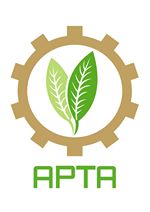Global Warming Potential of Nata de Coco Processing using Life Cycle Assessment Approach in CV. XYZ, Yogyakarta, Indonesia
Wahyu Supartono(1), Annisa Dwi Astari(2*), Ratnadewi Widhiarti(3), Wahyu Windayanti(4), Ika Fajriah Gama Putri(5), Siti Fathonah Gama(6)
(1) Department of Agroindustrial Technology, Faculty of Agricultural Technology, Universitas Gadjah Mada
(2) Department of Agroindustrial Technology, Faculty of Agricultural Technology, Universitas Gadjah Mada
(3) Department of Agroindustrial Technology, Faculty of Agricultural Technology, Universitas Gadjah Mada
(4) Department of Agroindustrial Technology, Faculty of Agricultural Technology, Universitas Gadjah Mada
(5) Department of Agroindustrial Technology, Faculty of Agricultural Technology, Universitas Gadjah Mada
(6) Department of Agroindustrial Technology, Faculty of Agricultural Technology, Universitas Gadjah Mada
(*) Corresponding Author
Abstract
Keywords
Full Text:
PDFReferences
Bank of Indonesia. Pola Pembiayaan Usaha Kecil (PPUK) Industri Pengolahan Nata De Coco. (www.bi.go.id) Accessed on July 1, 2018.
Phisalaphong, M., Tran, T., Taokaew, S., Budiraharjo, R., Febriana, G. G., Nguyen, D., Chu-Ky, S., and Dourado, F. 2016. Nata De Coco Industry in Vietnam, Thailand, and Indonesia. Bacterial Nanocellulos. Biotechnology to BioEconomy, pp 231-236.
Nuryakin, S. D., dan Hadiyarto, A. 2008. Studi Evaluasi Perencanaan Pengelolaan Lingkungan Melalui Pendekatan EkoEfisiensi (Studi Kasus pada Unit Deinking Plant PT. Kertas Leces Probolinggo). Master degree Thesis. Semarang: Universitas Diponegoro
Donella M., Jorgen R., and Dennis M. 2004. Limits to Growth: The 30-Year Update. Chelsea Green Publishing Company
Norris, G.A. 2001. Integrating Life Cycle Cost Analysis and LCA. International Journal of LCA, 6 (2): 118-120.
IPCC. 2006. IPCC Guidelines for National Greenhouse Gas Inventories Volume 2: Energy.
Article Metrics
Refbacks
- There are currently no refbacks.
Copyright (c) 2020 Wahyu Supartono, Annisa Dwi Astari, Ratnadewi Widhiarti, Wahyu Windayanti, Ika Fajriah Gama Putri, Siti Fathonah Gama

This work is licensed under a Creative Commons Attribution-ShareAlike 4.0 International License.









